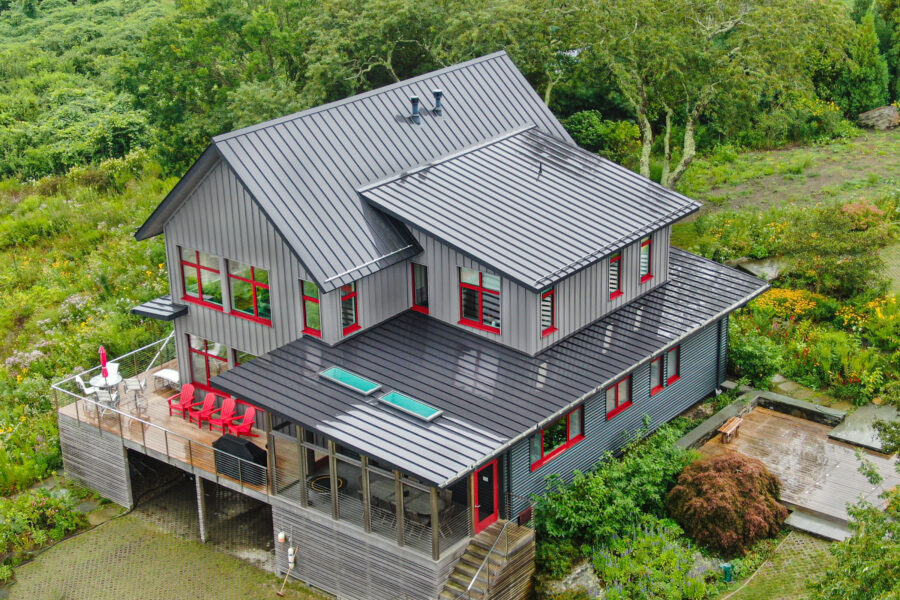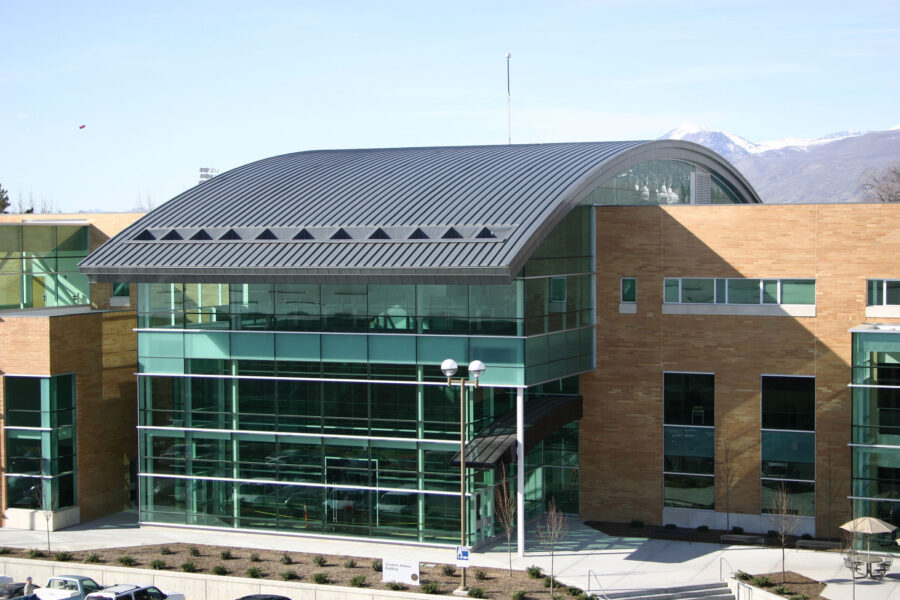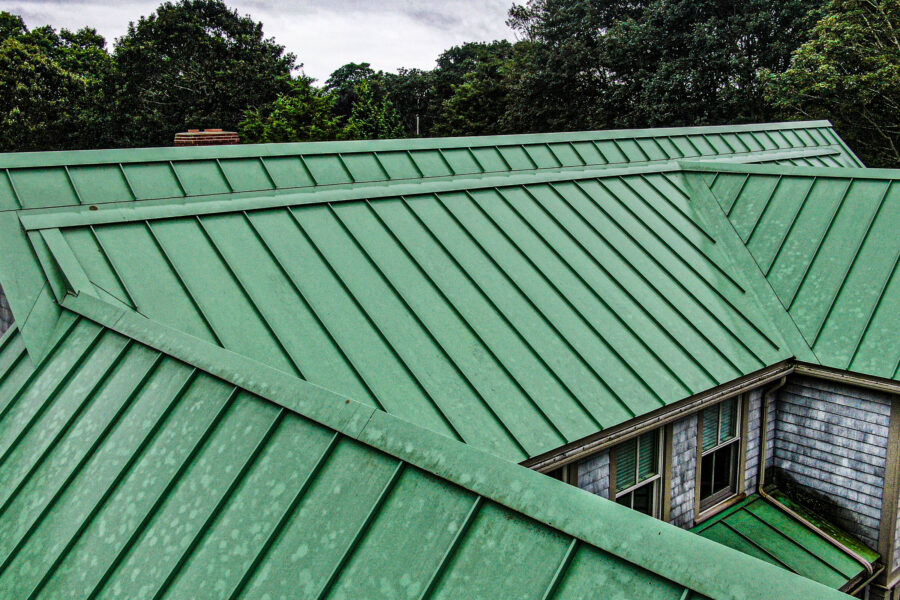Story at a glance:
- Asphalt shingles are made from petroleum and often take up space in the landfill after two decades.
- Membrane roofing also has a relatively short life span compared to metal roofing.
- Metal roofing has many sustainable benefits, including being recyclable.
When it comes to roofing materials most people think of asphalt shingles or membrane roofing as the default option. Recent research shows these materials are not as eco-friendly as we once thought. In fact, they can be quite detrimental to the environment.
Fortunately, there is an alternative—Englert standing seam metal roofing (SSMR).
The Problem with Asphalt Shingles
Let’s take a closer look at why asphalt shingles are so problematic. For one thing, they are made from petroleum—a non-renewable resource that requires a significant amount of energy to extract and refine. This alone makes them a questionable choice for anyone looking to lessen their impact on the environment. But there’s also more to it than that.
Asphalt shingles have a relatively short lifespan, usually 20 to 25 years. When they reach the end of their usefulness they are typically torn off and sent to the landfill. This creates a significant amount of waste that takes up space and doesn’t decompose for hundreds of years. Shingles can also release toxic chemicals into the air and water during their production and disposal.
Understanding Membrane Roofing
What is membrane roofing? This material is often used on flat or low-slope roofs. Membrane roofs are typically made from synthetic rubber or plastic, both of which require a lot of energy to produce. Like asphalt shingles, membrane roofing has a relatively short lifespan and creates a lot of waste at the end of its life.
All of this might come as a surprising revelation to homeowners and builders who assume asphalt shingles and membrane roofing are perfectly acceptable options for their building projects. But this is where Englert SSMR comes in.
The Benefits of Metal Roofing

Photo courtesy of Englert
Metal roofing is gaining popularity in the green building community for a number of reasons. For one, it’s made from a highly recyclable material that doesn’t require a lot of energy to produce. Aluminum specifically is made with up to 99% recycled material. Metal roofing also lasts a lot longer than other materials, which means less waste in the long run.
Metal roofing’s high reflectivity is another benefit. This means it reflects a lot of the sun’s rays, which helps keep a building cool in the summer. This reduces the energy needed to run air conditioning systems, which in turn lessens a building’s carbon footprint.

This BYU sports facility uses Englert metal roofing. Photo courtesy of Englert
Englert metal roofing is also coated with a PVDF finish that makes it resistant to corrosion, which means it’s even more durable in harsh weather conditions than other roofing materials. It’s also eligible for a 40-year finish warranty against fading, peeling, chipping, and chalking.
Finally, Englert metal roofing is also aesthetically pleasing. The company offers a variety of Ultra-Cool, low gloss colors and finishes so homeowners and builders can choose a look that complements their building. Metal roofing also has a sleek appearance that complements modern architecture.

Photo courtesy of Englert
It’s becoming increasingly clear that asphalt shingles and membrane roofing are not the eco-friendly options we once thought they were. Fortunately we have another choice that is sustainable, durable, and aesthetically pleasing—Englert metal roofing. We think this is the top choice for the green building community who wants to minimize impact on the environment while still building beautiful and functional structures.


